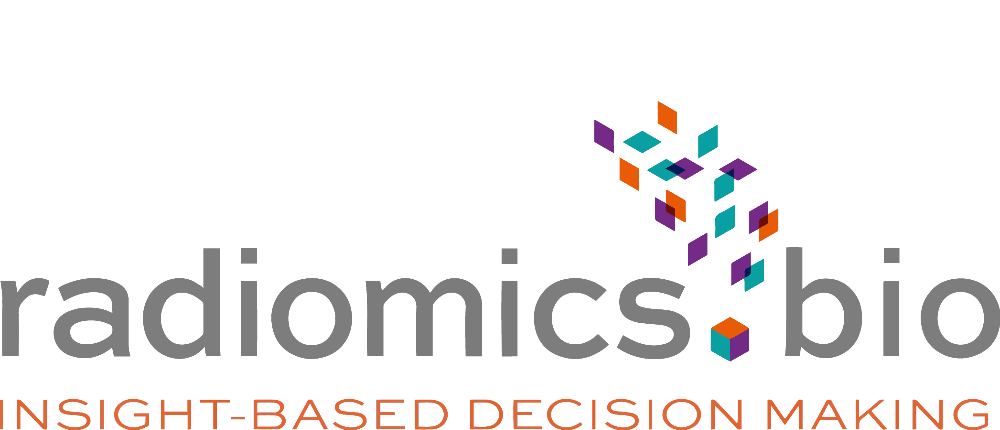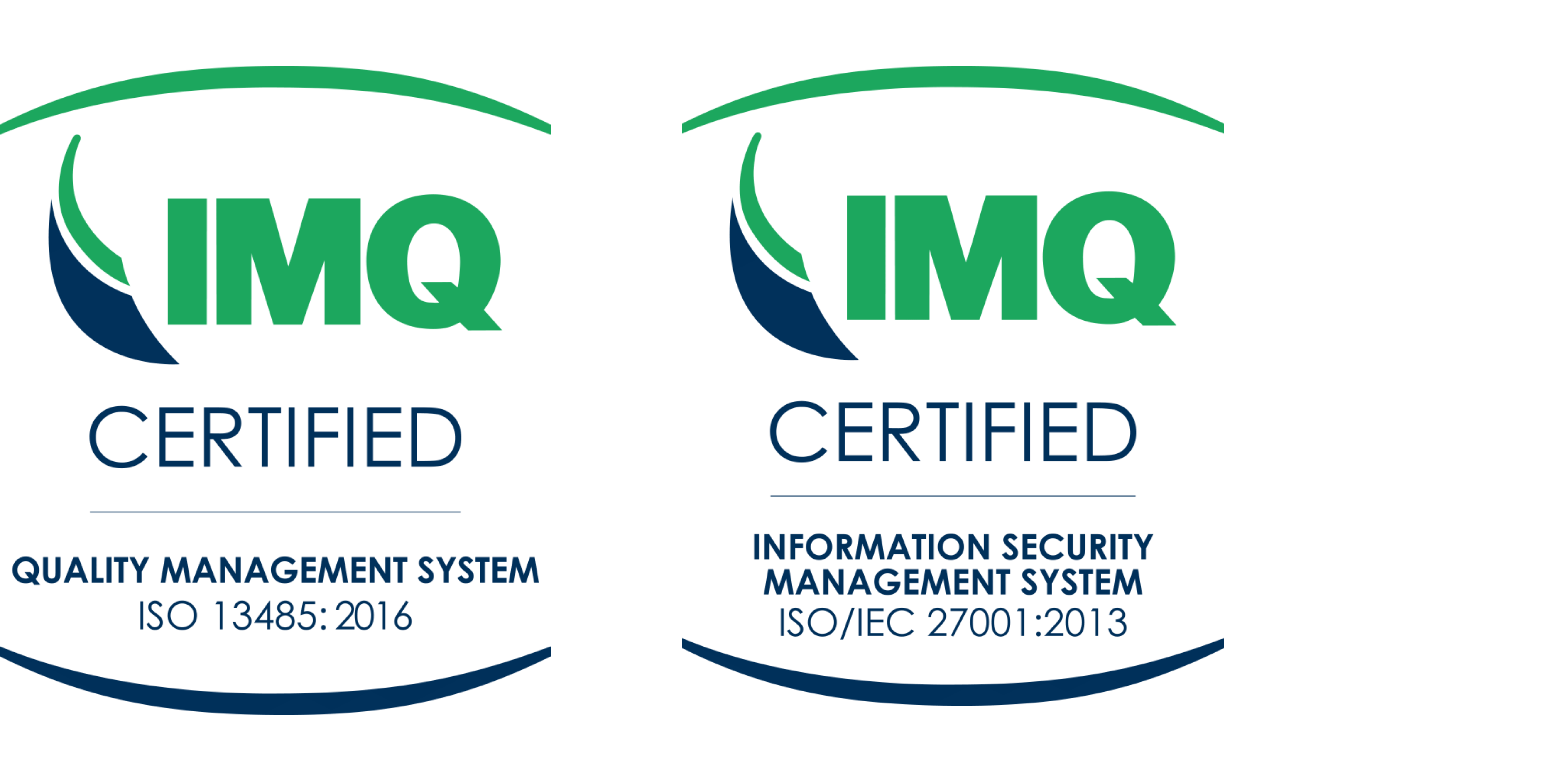Publications
2023
• Towards texture accurate slice interpolation of medical images using PixelMiner - 2023 Science Direct, Elsevier
• A Multimodal Imaging-Supported Down Syndrome Mouse Model of RSV Infection - April 2023 - MDPI
• Radiomics and Delta-Radiomics Signatures to Predict Response and Survival in Patients with Non-Small-Cell Lung Cancer Treated with Immune Checkpoint Inhibitors - March 2023 - Journal Cancers MDPI
• Automatic segmentation of mediastinal pathological lymph nodes with Deep Learning: the importance of accurate manual segmentations as ground truths - March 2023 - ECR 2023: European Congress of Radiology, Vienna, 1-5 March 2023 (Abstract)
• Machine Learning to Identify Patients at Risk of Developing New-Onset Atrial Fibrillation after Coronary Artery Bypass – February 2023 - Journal of Cardiovascular Development and Disease
• Deep learning based identification of bone scintigraphies containing metastatic bone disease foci – January 2023 – Cancer Imaging
• Editorial: Imaging assessment of response to immunotherapy – January 2023 – Frontiers in Oncology
2022
• Radiomics and delta-radiomics signatures to predict response and survival in patient with non-small cell lung cancer treated with immune checkpoint inhibitors – November 2022 - 37th Annual Meeting of the Society of Immunotherapy for Cancer, Boston, 8-12 November 2022 (Abstract)
• Externally validated deep learning model for the detection and classification of pulmonary embolisms on chest CTPA images – July 2022 – European Congress of Radiology 2022, Vienna, 13-17 July 2022 (Abstract)
• Data harmonisation for information fusion in digital healthcare: A state-of-the-art systematic review, meta-analysis and future research directions – June 2022 – Information Fusion
• The Role of Imaging in the Detection of Non-COVID-19 Pathologies during the Massive Screening of the First Pandemic Wave – June 2022 - Diagnostics(MDPI)
• Lesion-specific radiomics analysis shows promising results for early-stage efficacy assessment of IOA-244 in uveal melanoma- June 2022 – 2022 ASCO Annual Meeting, Chicago, 3-7 June 2022 (Abstract)
• Generalizability study of a deep learning model for automated lung segmentation on pediatric CT scans – June 2022 - Annual meeting of the European Society of Pediatric Radiology (ESPR), Marseille, 8-10 June 2022 (Abstract)
• Nodule vascularity as novel radiomics imaging endpoint for lung cancer diagnosis and prognosis – June 2022 – 2022 ASCO Annual Meeting, Chicago, 3-7 June 2022 (Abstract)
• Preliminary results of the “Blue Sky Radiomics” study on stage III NSCLC patients treated with chemo-radiation and consolidation immunotherapy – April 2022 - European Lung Cancer Congress 2022, Prague, 30 March (Abstract)
• Translation of a deep learning model for automated lung segmentation from clinical CT to preclinical μCT scans – March 2022 - European Molecular Imaging Meeting (EMIM), Thessaloniki, 15-18 Mar 2022 (Abstract)
• An externally validated fully automated deep learning algorithm to classify COVID-19 and other pneumonias on chest computed tomography – March 2022 – ERJ Open Research
2021
• A non-invasive, automated diagnosis of Menière’s disease using radiomics and machine learning on conventional magnetic resonance imaging: A multicentric, case-controlled feasibility study - October 2021 - La Radiologia Medica
The multi-layer perceptron model identifies patients with Menière’s disease based on radiomic features extracted from conventional T2-weighted MRI scans.
• Privacy preserving distributed learning classifiers – sequential learning with small sets of data - July 2021 - Computers in Biology and Medicine
We propose a privacy preserving distributed learning framework to exploit very small, siloed sets of clinical and imaging data to train AI models with performance comparable to centralized training
• A review in radiomics: Making personalized medicine a reality via routine imaging – July 2021 – Medicinal Research Reviews
Radiomics is the quantitative analysis of standard-of-care medical imaging; the information obtained can be applied to predictive and prognostic models.
• A Prospectively Validated Prognostic Model for Patients with Locally Advanced Squamous Cell Carcinoma of the Head and Neck Based on Radiomics of Computed Tomography Images – July 2021 – Cancers (MDPI)
We propose a multifactorial prognostic model including radiomics features to improve risk stratification for advanced HNSCC patients.
• Radiomics in Lung Diseases Imaging: State-of-the-Art for Clinicians – June 2021 – Journal of Personalized Medicine (MDPI)
Radiomic Analysis in Chest Computed Tomography: A Clinician’s Perspective
• The application of a workflow integrating the variable reproducibility and harmonizability of radiomic features on a phantom dataset – May 2021 – Plos One
Demonstration that the reproducibility of a given radiomics feature is not constant but is dependent on the heterogeneity found in the data under analysis.
• Deep learning for the fully automated segmentation of the inner ear on MRI – February 2021 – Scientific Reports
3D U-net model for the fully automated segmentation of the inner ear in MRI that is equivalent to human readers.
2020
• Development and Validation of an Automated Radiomic CT Signature for Detecting COVID-19 – December 2020 – Diagnostics (MDPI)
COVID-19 diagnosis in chest CT using fully automated AI framework
• Non-invasive imaging prediction of tumour hypoxia: A novel developed and externally validated CT and FDG-PET-based radiomic signature – December 2020 – Radiotherapy and Oncology
Development and validation of a disease-agnostic and disease-specific CT (+FDG-PET) based radiomics hypoxia classification signature.
• Diagnosis of Invasive Lung Adenocarcinoma Based on Chest CT Radiomic Features of Part-Solid Pulmonary Nodules: A Multicenter Study – November 2020 – Radiology
A radiomic signatures of part-solid nodules in CT scan for the detection of invasive lung adenocarcinoma in PSNs.
• Blockchain for Privacy Preserving and Trustworthy Distributed Machine Learning in Multicentric Medical Imaging (C-DistriM) – October 2020 – IEEE Access
A novel distributed learning that combines sequential learning with a blockchain-based platform, namely Chained Distributed Machine learning C-DistriM
• MRI-based radiomics in breast cancer: feature robustness with respect to inter-observer segmentation variability – August 2020 – Scientific Reports
The robustness of radiomics features extracted by two commonly used radiomics software with respect to variability in manual breast tumor segmentation on MRI
Radiomic analysis of peritumoral tissue may detect invasion of surrounding tissues indicating a higher chance of locoregional recurrence and distant metastases in head and neck squamous cell carcinoma
• The Image Biomarker Standardization Initiative: Standardized Quantitative Radiomics for High-Throughput Image-based Phenotyping – May 2020 – Radiology
The Image Biomarker Standardization Initiative validated consensus-based reference values for 169 radiomics features, enabling calibration and verification of radiomics software.
• Systematic Review of Privacy-Preserving Distributed Machine Learning From Federated Databases in Health Care – March 2020 - JCO Clinical Cancer Informatics
A review of the state-of-the-art in distributed learning in health care
• Preoperative CT-based radiomics combined with intraoperative frozen section is predictive of invasive adenocarcinoma in pulmonary nodules: a multicenter study – January 2020 – European Radiology
Development of a CT-based radiomics signature combined with frozen section (FS) and clinical data to identify invasive adenocarcinomas
• The Emerging Role of Radiomics in COPD and Lung Cancer– January 2020 – Respiration
Radiomics in COPD and lung cancer: A review and potential application in lung cancer evaluation
2019
• Computed Tomography-based Radiomics for Risk Stratification in Prostate Cancer – October 2019 – International Journal of Radiation Oncology – Biology – Physics
A study of the role of CT-based radiomics features in prostate cancer risk stratification using cross-validation
• Radiomics Analysis for Clinical Decision Support in Nuclear Medicine – September 2019 – Seminars in Nuclear Medicine
Radiomics can be used to aid clinical decision support systems in order to build diagnostic, prognostic, and predictive models.
• Challenges and caveats of a multi-center retrospective radiomics study: an example of early treatment response assessment for NSCLC patients using FDG-PET/CT radiomics – June 2019 – PlosOne
Prognostic models based on individual patient characteristics can improve treatment decisions and outcome in the future.
• Longitudinal radiomics of cone-beam CT images from non-small cell lung cancer patients: Evaluation of the added prognostic value for overall survival and locoregional recurrence – April 2019 – Radiotherapy and Oncology
A retrospective study on the potential added prognostic value of a longitudinal radiomics approach using cone-beam computed tomography (CBCT) for NSCLC
• Decision Support Systems in Oncology – February 2019 - JCO Clinical Cancer Informatics
Multifactorial Decision Support Systems for Oncology:Challenges, Opportunities, and Capacity for Precision Medicine
2018
• Applicability of a prognostic CT-based radiomic signature model trained on stage I-III non-small cell lung cancer in stage IV non-small cell lung cancer – October 2018 – Lung Cancer
Prognostic radiomic signature for overall survival in stage IV non-small cell lung cancer patients undergoing chemotherapy
• A review on radiomics and the future of theranostics for patient selection in precision medicine – July 2018 - British Journal of Radiology
Radiomics: A Precision Medicine Decision Support Tool for Oncology Treatment
• Pre-treatment CT radiomics to predict 3-year overall survival following chemoradiotherapy of esophageal cancer – August 2018 – Acta Oncologica
Predicting 3-year overall survival of esophageal cancer patients after chemoradiotherapy using pre-treatment CT radiomic features
• Radiomics for clinical decision support system in oncology – August 2018 - Physica Medica
The process of radiomics, its challenges, opportunities, and capacity to improve clinical decision making
• 18F-fluorodeoxyglucose positron-emission tomography (FDG-PET)-Radiomics of metastatic lymph nodes and primary tumor in non-small cell lung cancer (NSCLC) - A prospective externally validated study – March 2018 – PlosOne
Prognostic model for non-small cell lung cancer with FDG-PET-Radiomics features from LNs
• Development and validation of a radiomic signature to predict HPV (p16) status from standard CT imaging: a multicenter study – February 2018 – British Journal of Radiology
Evaluation of the use of a radiomic approach to identify the HPV status of oropharyngeal squamous cell carcinoma.
• Noninvasive Glioblastoma Testing: Multimodal Approach to Monitoring and Predicting Treatment Response – January 2018 – Disease Markers
Predicting and Monitoring Treatment Response in Glioblastoma with Improved Noninvasive Tests
2017
• Post-radiochemotherapy PET radiomics in head and neck cancer - The influence of radiomics implementation on the reproducibility of local control tumor models – December 2017 – Radiotherapy and Oncology
A comparison of post-radiochemotherapy PET radiomics with local tumor control in head and neck squamous cell carcinoma
• Big Data in radiation therapy: challenges and opportunities – December 2017 – British Journal of Radiology
Data collected and generated by radiation oncology can be classified by the Volume, Variety, Velocity and Veracity.
• Radiomics: the bridge between medical imaging and personalized medicine – October 2017 - Nature Reviews Clinical Oncology
Radiomics, the high-throughput mining of quantitative image features from standard-of-care medical imaging, is gaining importance in cancer research
• Influence of gray level discretization on radiomic feature stability for different CT scanners, tube currents and slice thicknesses: a comprehensive phantom study – September 2017 – Acta Oncologica
Radiomic feature values and their stability: The effect of CT-scanner, slice thicknesses, exposures and gray-level discretization
• Feature selection methodology for longitudinal cone-beam CT radiomics – August 2017 – Acta Oncologica
Radiomic feature values for CT images with different slice thicknesses, exposures and gray-level discretization
• 4DCT imaging to assess radiomics feature stability: An investigation for thoracic cancers - August 2017 - Radiotherapy and Oncology
4DCT-scans can be used as alternative to eliminate unstable radiomics features as first step in a feature selection procedure.
• Defining the biological basis of radiomic phenotypes in lung cancer – July 2017 – eLife
Identification of previously undescribed associations between radiomic imaging features, molecular pathways, and clinical factors to enable phenotypic profiling of tumors
• Predictive and prognostic value of CT based radiomics signature in locally advanced head and neck cancers patients treated with concurrent chemoradiotherapy or bioradiotherapy and its added value to Human Papillomavirus status – June 2017 – Oral Oncology
Prognostic and predictive value of radiomics in patients with locally advanced head and neck squamous cell carcinomas treated with concurrent chemoradiotherapy
• Infrastructure and distributed learning methodology for privacy-preserving multi-centric rapid learning health care: euroCAT – June 2017 – Clinical and Translational Radiation Oncology
A proof-of-principle for future ‘big data’ infrastructures and distributed learning studies
• Decision support systems for personalized and participative radiation oncology – January 2017 – Advanced Drug Delivery Reviews
An overview of the factors that are associated with outcome in radiation oncology and the methodology behind the development of accurate prediction models of treatment outcome


